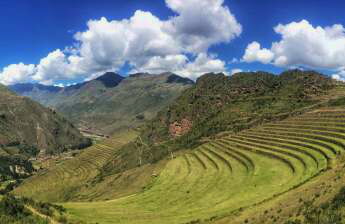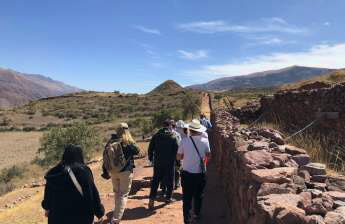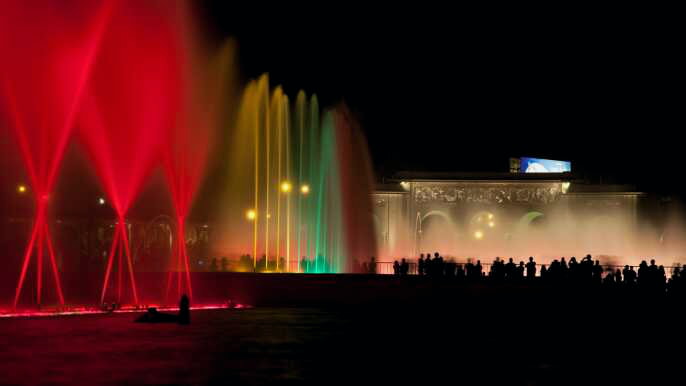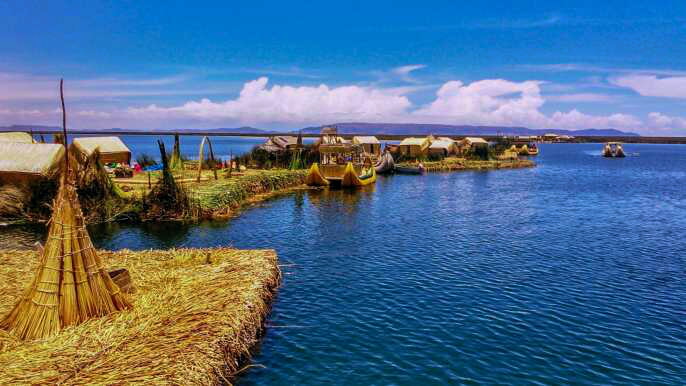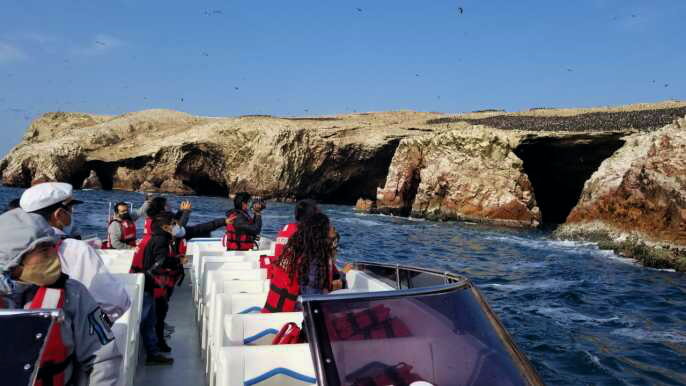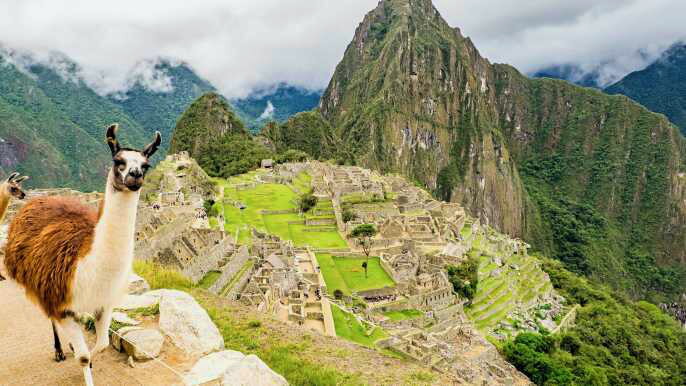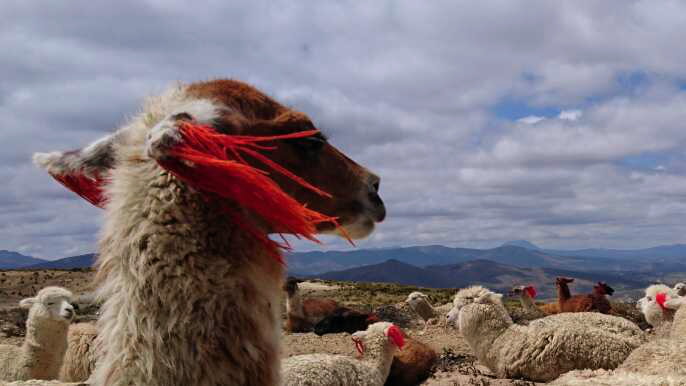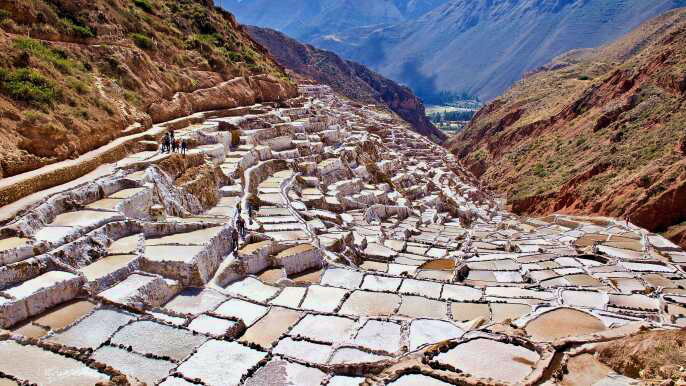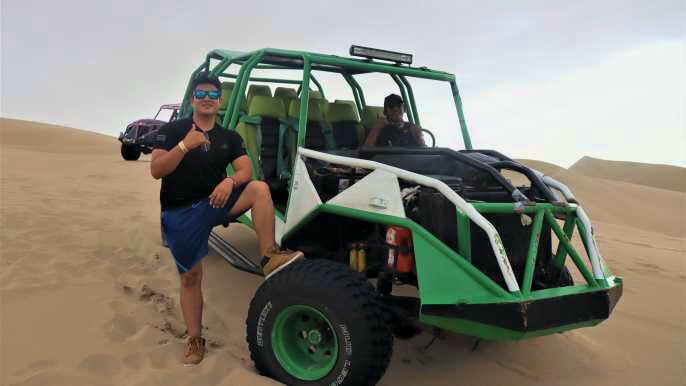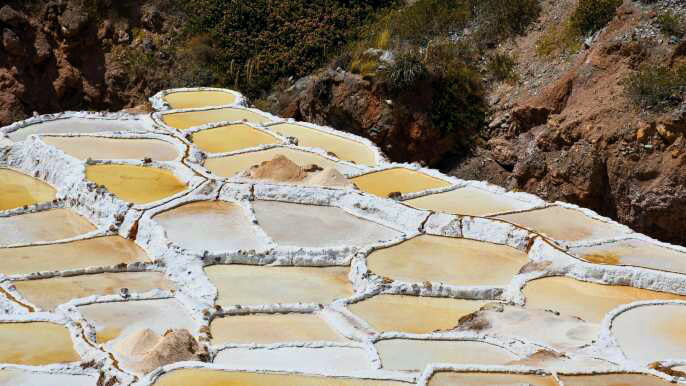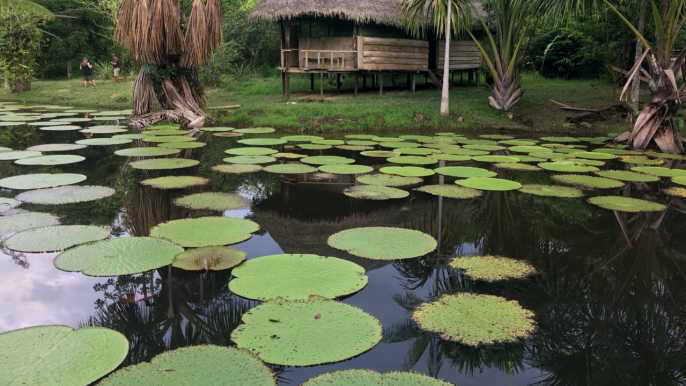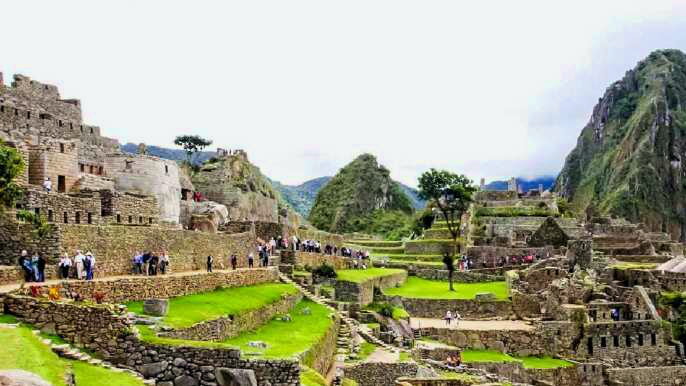Located in the Andes of Peru, Cusco is a city known for its Spanish colonial architecture and archaeological remains. The old city features the Plaza de Armas, which has carved wooden balconies and wall ruins.
Puka Pukara
Known as "Red Fortress," Puka Pukara is one of the ruins of the Inca Empire. It is a site of military ruins located in Cusco, Peru. The name of the ruins comes from the red color of the construction rocks.
The fortress is located on a hilltop overlooking the valley of Cusco. It was built during the reign of Pachacutec. It was later redeveloped. The fortress is made of large walls, terraces, and staircases. The fortress also functions as a checkpoint and resting place for travelers.
Puka Pukara was a major defense for the Inca empire. It was part of the Incan road system. It was also a huaca, or sheltered place. It may have served as a defense fortress and as a military base camp. It was constructed during the time when the Incan empire was flourishing.
The structure of the fortress is a good example of military architecture. The wall stones are stacked and unpredictably shaped. The fortress was probably built in a hurry.
The best time to visit Puka Pukara is during the dry season. It is also an easy spot to visit without a tour. The ruins are located at the top of the road to Pisac.
Moon Temple
Located on the outskirts of Cusco, the Moon Temple is a mysterious archeological site. It is built inside a cave and offers a breathtaking view of the surrounding landscape. It is a perfect place to relax, have a picnic or cook a meal. It is also a good place to ask for your wishes to the Moon.
The Temple of the Moon is a natural cave containing finely carved lithic structures. It was also used for fertility rituals. In addition, it is also believed to have been an astronomical observatory.
This site is located in the San Blas neighborhood of Cusco. It is a mystical place that can be reached by public transportation or by taxi.
It is considered to be one of the best panoramic landscapes in Cusco. The Temple of the Moon is located on a hill with two caves in it. It is about 2.5 kilometers from the main square. The Temple of the Moon is open from nine in the morning until five in the evening.
The Temple of the Monkey is another interesting building. It was shaped like a headless monkey and is said to have served as an astronomical observatory.
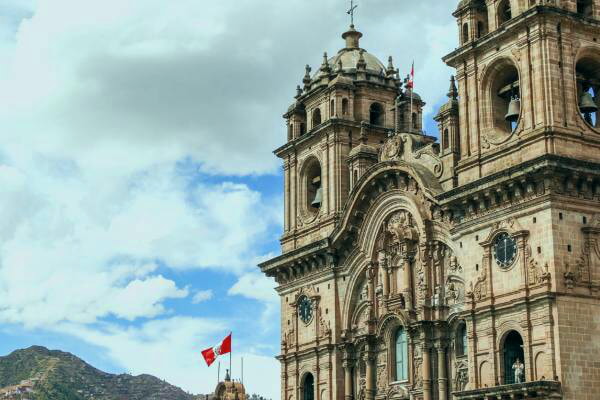
Sacsayhuaman
Located on the northern outskirts of Cusco, Sacsayhuaman is one of the oldest archaeological sites on Earth. Aside from being an impressive religious site, it was also a military fortress during the Incas. The fortress is a UNESCO World Heritage Site and is a must-see.
The site was built on a high-altitude platform of rock. The stones were cut precisely and placed to interlock so they could withstand earthquakes. The Incas moved the huge rocks with ropes and levers.
Today, you can see the ruins of the old fortress in Sacsayhuaman. You can reach the site by bus or car. It takes about forty minutes to get there. You can also go on a guided tour.
The construction took more than 50 years. The stones at the temple were sourced from a quarry that was 35 kilometers away. There are many important archeological discoveries at the site. Some of the main ones include the Cusco Cathedral and the Puca Pucara.
The site is open from 7 am to 6 pm most days of the year. The ruins are in direct sunlight, so they can get a little hot.
Rainbow Mountain
Located in Cusco, Peru, the Rainbow Mountain is a small but beautiful formation in the Andes mountain range. It has been a place of worship since pre-Inca times. It is perched high above the Vilcanota range. The mountain is stained with various hues.
It was first discovered in 2015 when climate change melted some of the ice covering it. The best time to see the rainbow mountain is during a clear day. Typically, the colors are most vibrant at noon.
There are two routes to get to Rainbow Mountain from Cusco. The shortest is the Pitumarca route, which cuts three hours off the trip. Alternatively, you can take the Salkantay Trail, which reaches 4,600m.
The best time to visit Rainbow Mountain is during the dry season, from May to October. The weather is usually pleasant and blue skies are the norm. However, you may also want to avoid it during early mornings or evenings. The thinner air will make breathing and walking difficult.
A rainbow mountain tour is a great way to see the region. The excursion also includes views of the Ausangate glacier and picturesque villages. It's recommended for families, couples and outdoor enthusiasts.
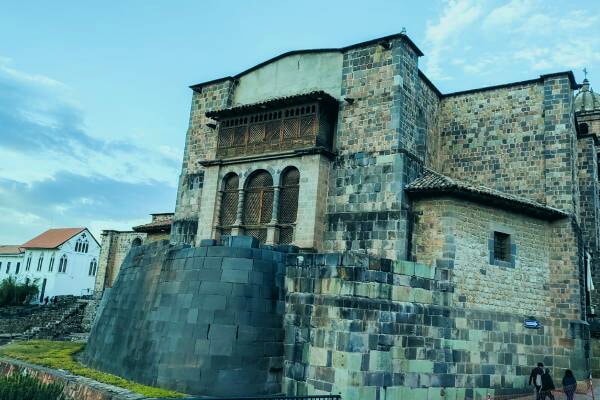
San Blas
Located in the center of Cusco, San Blas in Cusco is one of the most beautiful neighborhoods in the city. It is lined with artists' workshops and shops. It is also a popular tourist spot. It is filled with art galleries, restaurants, bars, and cafes.
During the Inca period, San Blas in Cusco was known as T'oqo-kachi, or a place where nobility and elite gathered. When the Spanish conquered the area, they destroyed many of the T'oqo-kachi temples. In their stead, colonial buildings were built. The neighborhood retains a sense of Andean culture, though.
The neighborhood's main temple, the Templo de San Blas, was built on the remains of an Incan shrine. It was also the first parish church in Cusco. The building's simple facade features plateresque designs. The pulpit inside is carved from a single tree trunk that is 400 years old. It is the most impressive pulpit in the entire region of Cusco.
There are several restaurants in the neighborhood that serve highland cuisine, such as Lomo Saltado. Some of the best restaurants in the neighborhood offer panoramic views of the city.
Pisac Ruins
During the Inca Empire, Pisac was the ceremonial center and guarded access to the Urubamba and Vilcabamba valleys. The village was also a key place for agricultural activities, and the Pisac Ruins were significant for religious ceremonies and burial grounds.
The Pisac archaeological site consists of seven areas of architectural significance. This includes the administrative section, Qantus Raqay, and the Qallaq'asa, which features vertical terraces for defence and towers for communication.
The ruins are a short walk from the village of Pisac, and it is possible to take a taxi to the entrance. A good time to visit is around lunchtime, and you can spend a few hours exploring the site.
A 10-day all-inclusive ticket costs about 70 soles for foreigners and about 130 soles for students with an ID card. This ticket includes access to 16 archaeological sites in the Sacred Valley. It's worth the price for the active traveler.
To get to the ruins, you can take a combi from Cusco or Calca. This takes about 45 minutes. You can also take a local bus, but it will make many stops.
Santo Domingo Church
Located in Cusco, Peru, the Church and Convent of Santo Domingo is a colonial structure built by the Dominican Order in the 16th century. It is situated on the foundations of the Coricancha temple, one of the most important religious sites of the Inca empire.
The site is home to numerous vestiges of the Inca Empire. Several walls of the temple still stand. These were constructed with a slightly curved orientation to prevent them from breaking during earthquakes. The interior of the Cathedral is adorned with different religious paintings. The Virgin of the Rosary is one of the main images on the altar.
The Convent of Santo Domingo is the first Dominican Order convent in Cusco. The Dominican order started evangelizing in Cusco in 1534. They continue to work in the area today. The church has a library that is open to the public. The library contains a large collection of ancient texts and modern art. It is also the home of a museum, which is opened to the public.
The church has three naves. They are decorated with canvases from the 'Cusco School of Painting'. The main altar has up to 23 canvases surrounded by images of saints.
Jardin Sagrado
Located on the edge of Cusco's tourist district, Tambo del Arriero Hotel Boutique is a boutique hotel that is a little off the beaten path. It has a quaint courtyard draped in romantic light. The hotel is designed around the former Velasco Ordonez residence and features 43 rooms. It is a slick and minimalist property with clean and well-appointed rooms. The restaurant is a good place to sample local fare, and the bar serves up first class table service.
It also has a surprisingly large garden, which is a good place to take in some rays on a hot day. A small room with religious art is attached to the courtyard, and a large outdoor terrace offers some of the best views of the city.
The hotel boasts a well-appointed, modern interior, and its location provides easy access to the historic district of Cusco. The hotel is an 8 minute drive from the airport, and a short walk to the central square. The hotel's suites have modern amenities, including glass showers, and comfortable separate tubs.


